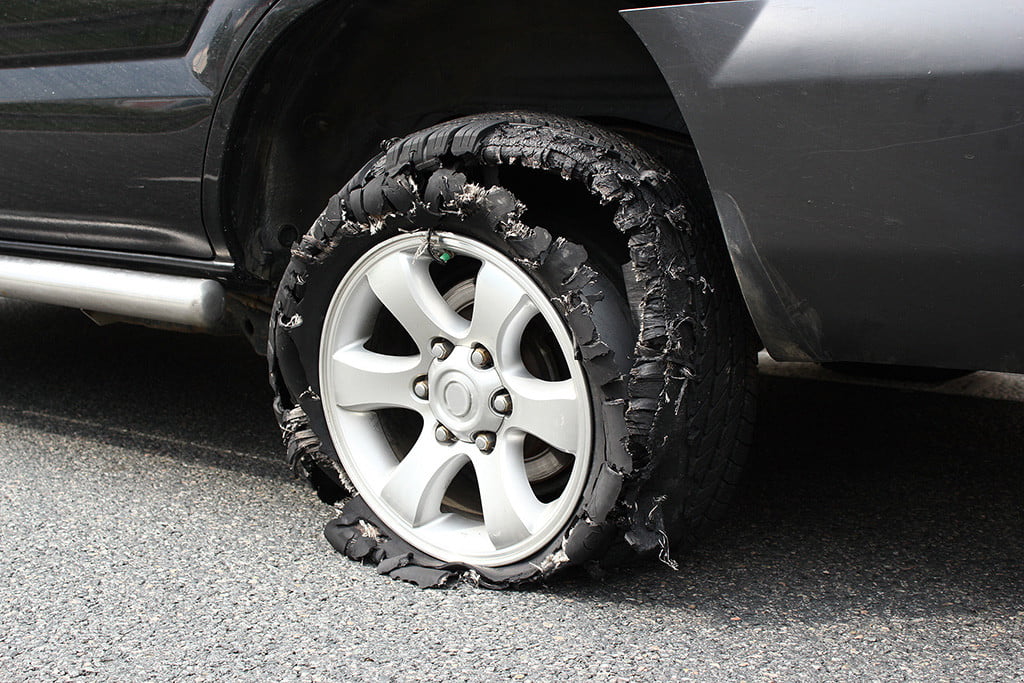Your tires are the most important part of your vehicle since they’re your only point of contact with the road. With the weather warming up and road trip season approaching, now is the time to perform spring car maintenance and check for any damaged tires that can leave you on the side of the road.
ASE Certified mechanic and Endurance expert, Keith Benline, feels that too many people underestimate the importance of driving with good quality tires: “When driving on the road at high speeds, your tires are what keep you safe and stabilized. Once a tire becomes unstable, this can lead to a dangerous accident or a sudden blowout on the road.”
So why do tires blow out and how can you prevent it? Keep reading for the top tire blowout causes.
Get A Free Quote
By definition, a tire blowout is the sudden failure of a tire, but like any breakdown issue, it can happen for a number of different reasons. A tire blowout accident can happen from underinflation or overloading your vehicle with too much heavy cargo.
The tire pressure monitoring system in your dashboard usually flags when the air pressure of your tires is low, but you should make sure to check yourself for small punctures or worn tire tread.
Here are some of the most common causes of tire blowouts:
Both over and underinflated tires can cause serious problems for drivers, but it’s low pressure that will more likely lead to a blowout. When a tire is starting to deflate, its sides make contact with the road surface. The sides of the tire are a lot thinner than the tread and wear away much more quickly. If weak spots start to form, blowout usually follows.
Perhaps an obvious one, but still one worth pointing out. It’s easy to run over a screw or a nail and not notice, but as air escapes around it, your tire will start to deflate. As it does, we move into the low-tire-pressure territory, wearing away the sides and bringing you closer to a blowout.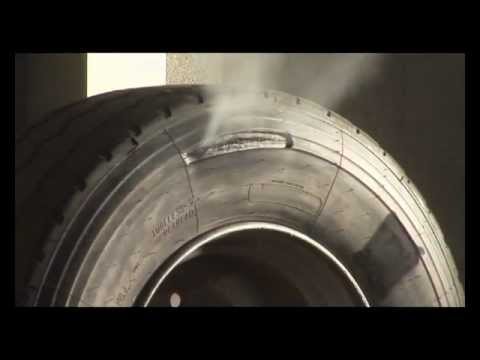
Sometimes a road’s surface can be just as dangerous as the people driving on it. Avoid hitting curbs and potholes, but also debris like glass, metal, and stones. If your tire is already weakened, running over any of the above can easily leave you with a flat tire.
If you don’t regularly rotate your tires, uneven wear is inevitable. Exposing the same areas of the tread to extreme friction every time you hit the road means they’ll get very thin, very quickly, drastically increasing the chances of a blowout. You may begin to notice the steel belt cords showing through the rubber, and as Keith Benline points out: “Once the steel cord is showing through, you’re 50% more likely to experience a blowout at any time on the road.”
You may have spotted it in your owner’s manual, but every vehicle has a limit to the amount of weight it can safely bear. Load up with anything above that limit, and you’ll put excess pressure on the tires. This is bad enough on its own but combined with uneven tread wear, it’s a recipe for blowout disaster.
This is bad enough on its own but combined with uneven tread wear, it’s a recipe for blowout disaster.
As with all car parts, the older they are, the more likely they’ll experience part failure—and tires are no exception. The more road trips they take you on, the thinner the tread becomes until a blowout is bound to happen. Sometimes, however, age isn’t the issue. A brand-new tire with a manufacturer default can be just as dangerous.
Experiencing a blowout is never ideal, but with the right extended auto warranty in place, you can gain peace of mind you have a team ready to help. From 24/7 roadside assistance to tire replacement coverage with Endurance Elite Membership, Endurance has got you covered. Learn more about your options by requesting a free, no-obligation quote today.
Get A Free Quote
It goes without saying that you should avoid a car accident caused by a tire blowout at all costs, but with some simple general maintenance, you can significantly reduce your chances of experiencing one. Take a look at Keith’s top tips:
Take a look at Keith’s top tips:
The signs of a worn-down tread are easy to spot—all you need to do is look for them. Keith Benline suggests a quick check every time you stop for gas: “Turn your steering wheel all the way to the left, then check to see the entire tread of your tire. Look at both front tires to see if they’re wearing evenly. If it looks uneven or worn on one side more than the other, then take your car to a local shop. Request a tire inspection and/or alignment check if you haven’t gotten one already.”
By seasonally rotating your tire set, you prevent uneven wear and increase its lifespan by a few years. This has the dual effect of both saving you money and keeping you safe on the road—two great benefits that are well worth the effort every few months.
Breakdown protection plans like EnduranceAdvantage™ covers up to $35 towards your next tire rotation, as well as other routine maintenance like oil changes and brake pad replacements. Not only can you save on costly repairs, but now you can put money back in your pocket while properly maintaining your vehicle.
Not only can you save on costly repairs, but now you can put money back in your pocket while properly maintaining your vehicle.
Your owner’s manual should give you an exact PSI number for your particular vehicle, but when in doubt, 32 PSI is the most common pressure setting for cars. You can also check the side, tire manufacturers often put the recommended PSI on the sidewall.
By taking out an extended auto warranty that includes general maintenance, you have much less reason to worry about blowouts. The best providers will cover the cost of regular tire rotation and may even repair/replace tires when necessary. Just make sure to check your terms before you sign up, as many providers explicitly exclude tires from coverage.
Breakdown protection works to cover both parts and labor for any car repairs and issues, especially during tire blowout season. With an Endurance protection plan, not only will you have access to 24/7 roadside assistance, but you can also have up to $3,500 in maintenance covered with Endurance’s newest coverage plan.
Every new Endurance member also receives a year’s access to Endurance Elite, bringing with it a host of amazing everyday driver benefits. Request a free, no-obligation quote online now, or head over to our Learning Center for more articles and resources.
Popping a tire is never ideal, especially when it happens at highway speeds - which it usually does. But, is there any way to prevent damage? What should you do when a tire blows?
The answers may be simpler than you might think.
While not many factors are in our control when it comes to a deflated tire, we can help to avoid further problems if we know what to do in an emergency. Therefore, let's take a deep breath and see everything we need to know about tire blowouts.
What is a Tire Blowout?A tire blowout is a type of tire damage that usually happens during driving. It is caused by the sudden and rapid loss of air pressure. A blown tire is often associated with a flat tire, but there is a big difference between them.
A flat tire is the result of gradual tire pressure loss, which offers enough time for the tire pressure monitoring systems' sensors to notify the driver of the problem. On the other hand, tire blowouts happen in a split second. Heat and pressure build-up cause a failure as the tire pressure suddenly erupts from the tire, resulting in a loud boom and irreparable damage.
Air pressure suddenly leaves the tire, due to various reasons, and further damages the tread and sidewall areas. This "explosion" results in a blown-up tire, which cannot be used anymore.
What Causes a Tire Blowout?There are various causes of tire blowouts, ranging from air pressure problems to road hazard damage. However, all of them have one thing in common: they ruin the tire's lifespan.
A common misconception is that only too much tire pressure causes blowouts. Yet, a blowout occurs mostly for the exact opposite reason. Low PSI levels will make the sidewalls bend and flex, accumulating pressure that results in a blown-out tire.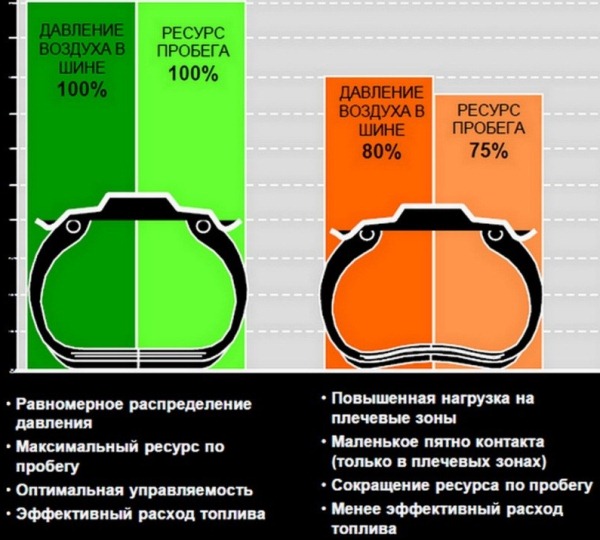
Other contributing factors include overestimating the tires' capabilities, poor tire maintenance, road hazard damage, impact damage, giant cuts, and small punctures. In one way or another, all of these can damage the tires, causing tire failure.
Overpacking the car with loads or driving it at high speeds are not necessarily issues in themselves. However, when we exceed the manufacturer's recommendations of load and speed, the tires will fail. This often results in tire blowouts.
The rest of the issues can be categorized under damage. Road hazards, impacts, or even small punctures can damage the tire's internal structure and steel cord reinforcement. An immediate or delayed blowout can effectively damage the tire's usability and performance.
A tire blowout can be scary! When it happens, often drivers lose control of their vehicles. Yet, the most important thing to keep in mind when experiencing a tire blowout is to stay calm.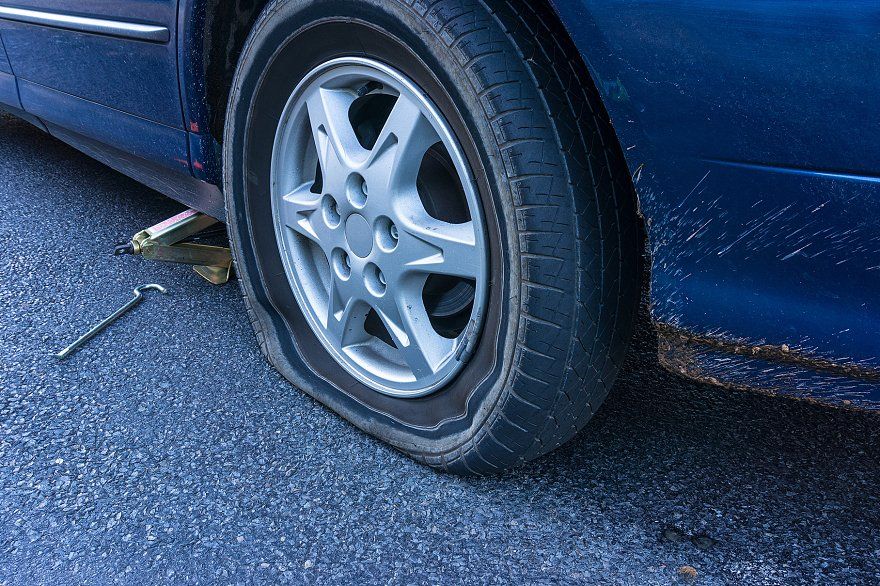 You will need to maintain control of the car and you will need a clear head to do so.
You will need to maintain control of the car and you will need a clear head to do so.
But, how exactly can you do that?
When the problem already occurs, you won't have time to look up what to do. So, it's better to be prepared beforehand.
If you have a tire blowout and know what to do, you can save yourself from unnecessary headaches. However, you will need to know exactly what to do in order to get out of the sticky situation safely.
First, let's take a look at how you can recognize a blowout.
Whether it happens to a front tire or a rear tire, the signs will be a bit different. A front tire blowout will cause the car to swerve towards the side with a faulty tire (i.e.: if the driver's side tire blew out, the vehicle will start pulling to the left). On the other hand, a rear blowout will cause the vehicle to shimmy back and forth.
Still, the sound will be the same! You will hear the tire's failure at the same time you feel it.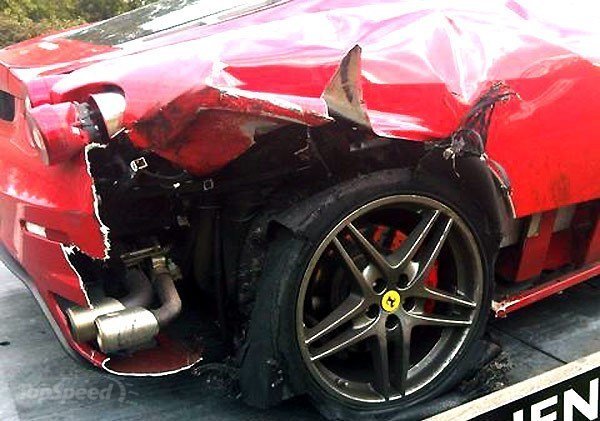 When a blowout occurs, you will hear a loud boom when the pressure rapidly leaves the tire. After this, a flapping sound will reach you, which is created by the deflated tire elements making contact with the driving surface.
When a blowout occurs, you will hear a loud boom when the pressure rapidly leaves the tire. After this, a flapping sound will reach you, which is created by the deflated tire elements making contact with the driving surface.
From this point on, you will need to do all you can to handle the car in a safe manner.
You heard the pop and the vehicle starts to sway, this is where most drivers panic.
Don't be like other drivers, read up on such situations before they happen and be prepared.
First and foremost, you need to keep a cool head. Keep a firm grip on the steering wheel and slowly steer the car in the direction you wish to go. Avoid jerking or quick movements as they will just make steering harder. Be gentle with the steering wheel to ensure the car's forward momentum.
Now, your instinct might tell you to hit the brake pedal and stop the car. Do not do that! Instead, step on the gas pedal and gently accelerate. Pushing down on the accelerator will help stabilize the vehicle, helping you regain control.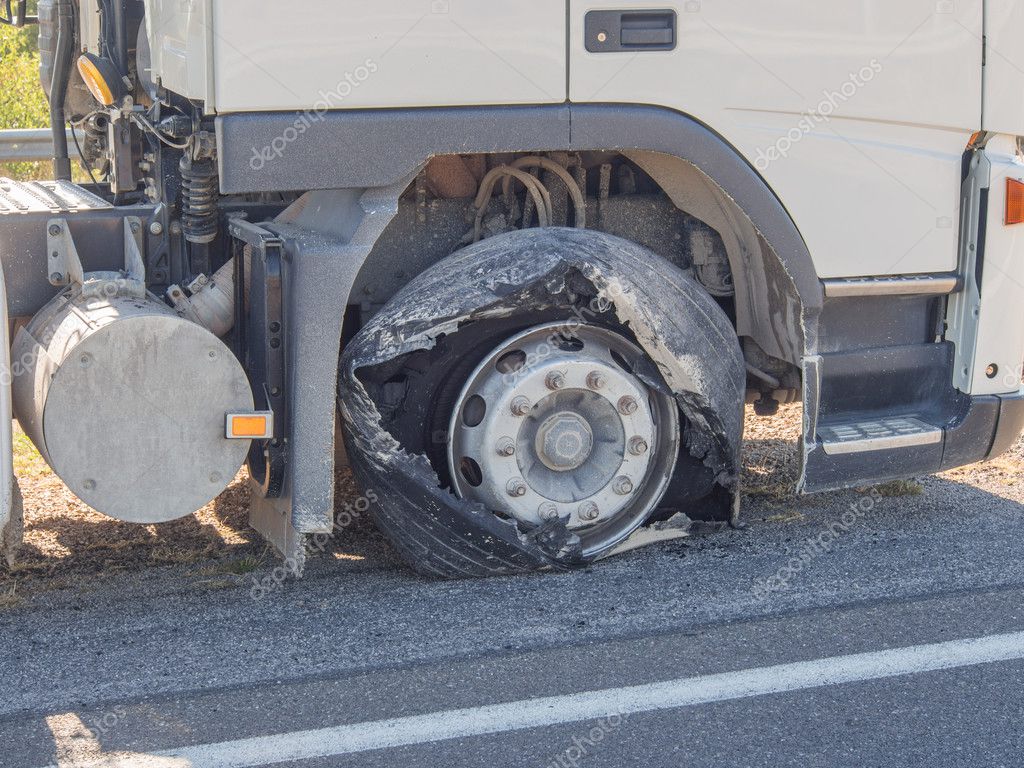 It will also keep your mind off of the brakes and turn the steering wheel.
It will also keep your mind off of the brakes and turn the steering wheel.
At this point, the vehicle will start to slow down. This is due to the fact that only three tires are operational now. Use this opportunity to pull over and lightly press the brakes, which will help stop the car.
Leave the steering wheel alone, turn on the emergency lights (or emergency flashers), and set up your "road hazard corner". By this, we mean setting up a reflective triangle to alert other drivers of your predicament. This is especially crucial at night when visibility is not the best.
When you have come to a stop and set everything up, it is time to replace the tire or call for help.
How to Prevent a Blowout?Taking care of your cars begins with their tires. Tire maintenance will help you prevent many related issues, including a blowout tire. Most causes of tire blowout are preventable and if you wish to protect your vehicle simple tire maintenance is the way to go.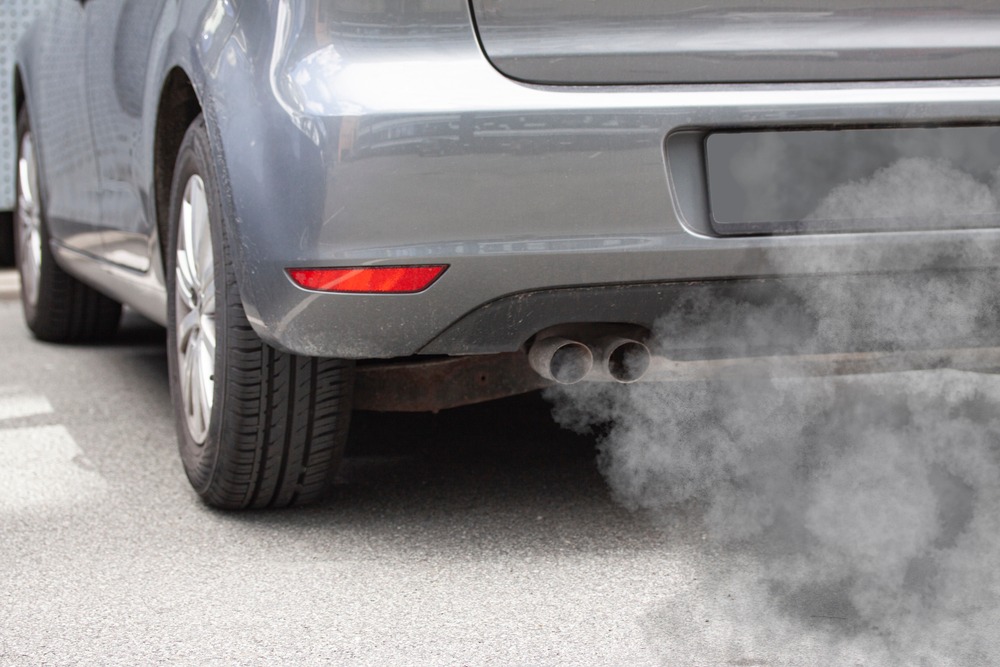
It is important that you equip your vehicle with the correct tires. Check the owner's manual to see the tire size, load and speed ratings, PSI levels, etc. required to ensure the vehicle's secure performance. A tire blows often because it cannot handle the pressure placed on it. Drive the vehicle at a safe speed. Often high speeds create heat accumulation that results in the tires' blowout.
Checking the PSI levels regularly is another way to avoid damage. It is normal for tires to lose air pressure over time. This slow leak is due to temperature changes. Following the PSI levels will make sure the tires are always running on the recommended pressure levels.
Focus on the road noise you hear during the drive. If anything feels off, have your vehicle checked out. The problem might be fixed with a simple tire rotation that will optimize the tread wear manner. Brake, steer, and accelerator issues will also be found with regular maintenance. While they do not necessarily play a role in blowouts, it's not a bad idea to have the vehicle inspected.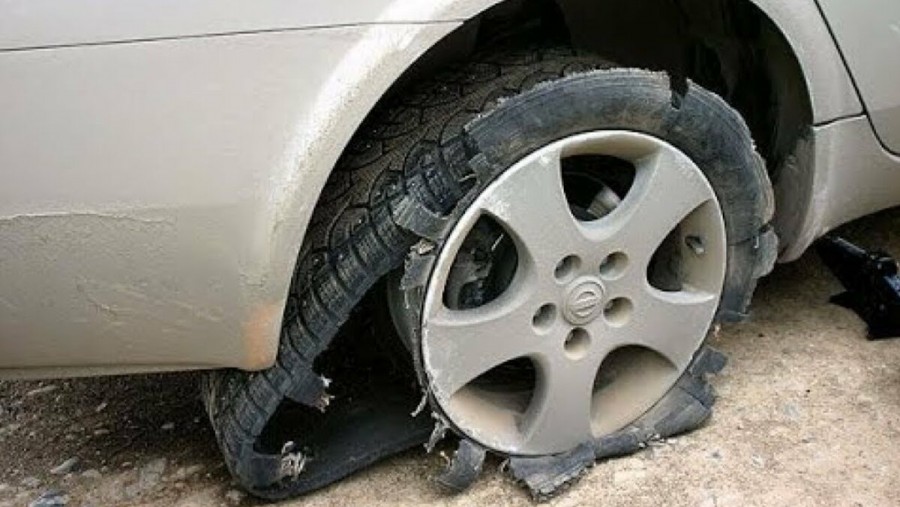
Before you look at how you can prevent a tire from blowing, you must first understand why tires blow. Let's look at the main reasons why car tires burst.
Direct impact
Unfortunately, the state of most roads in Russia is still deplorable. If you travel the same terrible road every day, your subconscious automatically trains to avoid these holes and potholes. But even then you can hit the inevitable object. Depending on the severity of the impact and the condition of your vehicle's tires, this could result in a blown tire.
Over or under pressure
This is by far the most common cause of a blown tire. An under-inflated tire means more contact between the surface of the tire and the road, resulting in more friction and heat, resulting in tire blowout. On the other hand, overinflated tires reduce braking performance and can burst at high speeds, leading to accidents.
Overloading
While overloading is more common in commercial vehicles than in cars. But still, you should always be careful not to stuff more than recommended. Excessive loading increases the load on the tires, which can lead to a blown tire.
But still, you should always be careful not to stuff more than recommended. Excessive loading increases the load on the tires, which can lead to a blown tire.
Low quality or worn tires
Cheap low quality or worn tires are more susceptible to damage. If you notice any cuts or bulges, or the tread is completely worn out, you should have your tires repaired or replaced immediately to avoid any possibility of tire blowout while driving.
Speeding
Unlike Formula 1 cars, passenger car tires are designed for certain speed limits. Higher speeds result in more friction, which increases the surface temperature of the tire. The chance of blown tires increases if you drive above this limit.
The tire speed rating is listed next to the tire size. If the tire size is "P 165/80 R14 85 T", the "T" here is the speed symbol, which represents the tire's speed index.
Check out the table below which lists all symbols along with their maximum speed ratings.
| Symbol | Maximum speed |
| P | 150 km/h |
| Q | 160 km/h |
| R | 170 km/h | S 6 180 km/h |
| T | 190 km/h |
| U | 200 km/h |
| H | 210 km/h |
| Z | 260 km/h |
| W | 270 km/h |
| Y | 300 km/h |
| (Y) | 300+ km/h |
Note . Nowadays, more and more highways and expressways are being built with cement and concrete due to their ability to last longer than coal roads.
If you are driving on a road made of cement and concrete, or driving on a hot summer afternoon, you must control your vehicle speed because cement roads are hotter than coal roads.
Now that you know all the reasons why car tires burst, let's see how you can prevent a burst tire. Because, whether it's your health or the health of your car's tires, prevention is always better than cure.
Because, whether it's your health or the health of your car's tires, prevention is always better than cure.
 Especially when driving on concrete roads in summer, as it can get very hot there.
Especially when driving on concrete roads in summer, as it can get very hot there.  This can further destabilize your vehicle.
This can further destabilize your vehicle. Blown car tires can be extremely dangerous to you and other people/vehicles on the road. We believe that life is too precious to be lost through a little carelessness.
Keep your tires in good condition and follow the tips above to stay safe on the road.
Perhaps, while driving on intercity roads, you noticed that the number of damaged tires that come across your way increases significantly with the onset of summer heat. Indeed, summer is not the most favorable season for tires.
Indeed, summer is not the most favorable season for tires.
One of the main reasons you may need to change your tires is driving with under-inflated tires. This often leads to overheating of the tires and an increase in the likelihood of deformation of their surface, especially at high temperatures.
Of course, the negative effects of running on flat tires will be obvious at any time of the year, but when combined with high ambient temperatures, tires are especially prone to failure in summer.
When the vehicle is driven on the road, the sidewalls of the tires flex and as a result, the area of the "contact patch" of the tires on the asphalt increases, which creates additional heat and stress on the tread. If the tire pressure is correct, the heat generated is minimal. But if the tire pressure is low, then the curved sidewalls create much more heat. Add in the heat from the summer sun, and eventually the ligaments in an under-inflated tire may give way and you'll end up with a surface tear.
Add in the heat from the summer sun, and eventually the ligaments in an under-inflated tire may give way and you'll end up with a surface tear.
Rupture of the tire surface in motion is not just an inconvenience that makes you spend money in a car service. According to statistics, more than 11,000 accidents per year are associated with the destruction of tires while driving.
Here are a few tips to help keep your tires at optimum pressure:
Please note that it is best to check the tire pressure when the vehicle is cold, ie.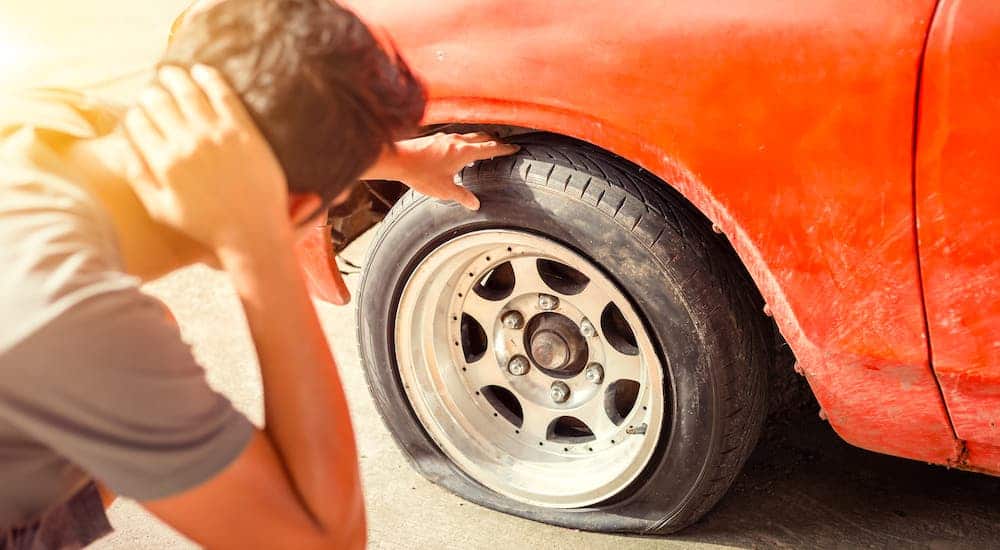 not driven for about 3 hours, otherwise you may get distorted readings on the pressure gauge.
not driven for about 3 hours, otherwise you may get distorted readings on the pressure gauge.
Many modern cars have a dash indicator light that comes on to notify the driver that the tires have lost pressure (typically 25% below the safe level). This is pretty handy, but you shouldn't rely on the signal light alone, as it comes on when the tire pressure is already at a fairly low level. Experts recommend regularly checking tires with a pressure gauge.
If you find yourself in this unpleasant and dangerous situation, it is important to remain calm and follow a few guidelines.
| Manufacturer | Part number | Designation | |
| MICHELIN | 543939 | Summer tires Michelin Latitude Sport 3 (ZP) 285/45 R19 111W | |
| MICHELIN | 699514 | Summer tires Michelin Latitude Sport (MO) 275/55 R19 111W | |
| MICHELIN | 364558 | Summer tires Michelin Primacy 3 235/50 R18 101Y | |
| MICHELIN | 518047 | Summer tires Michelin Pilot Sport 4 (XL) 245/45 R17 99Y | |
| BFGOODRICH | 470918 | Summer tires BFGoodrich G-Grip 195/55 R16 87V | |
| BFGOODRICH | 445226 | Summer tires BFGoodrich G-Grip 215/55 R17 94W | |
| TIGAR | 176279 | Summer tires Tigar Syneris 245/45 R18 100W | |
| NORDMAN | T429584 | Summer tires Nordman Nordman SC 215/65 R16C 109T | |
| NOKIAN | T430112 | Summer tires Nokian Hakka Blue 2 (XL) 205/60 R16 96W | |
| MICHELIN | 6 | Summer tires Michelin Agilis+ 205/75 R16C 110R | |
| NITTO | NS00015 | Summer tires Nitto NT860 195/55 R15 85V | |
| TUNGA | 742205913 | Summer tires Tunga Zodiak 2 PS-7 175/70 R13 86T | |
| MICHELIN | 887014 | Summer tires Michelin Latitude Tour HP 275/60 R20 114H | |
| TUNGA | 686201306 | Summer tires Tunga Zodiak 2 PS-7 185/65 R15 92T | |
| TUNGA | 686201297 | Summer tires Tunga Zodiak 2 PS-7 185/65 R14 90T | |
| TUNGA | 686201181 | Summer tires Tunga Zodiak 2 PS-7 175/65 R14 86T | |
| MICHELIN | 607841 | Summer tires Michelin Pilot Sport 3 205/50 R16 87V | |
| MICHELIN | 546621 | Summer tires Michelin Pilot Sport 2 (N4) 235/40 R18 95Y | |
| MICHELIN | 541785 | Summer tires Michelin Primacy 3 (AO) 225/45 R17 91Y | |
| KAMA | 2210007 | Summer tires Kama Euro-131 185/75 R16C 104R |
* Specify the applicability of parts specifically for your car with managers by phone: 8 800 555-43-85 (free call within Russia).